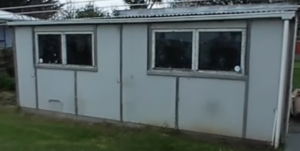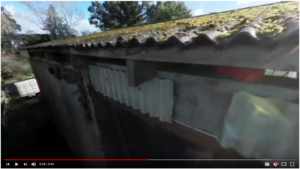Whew, so asbestos is flagged in your risk matrix? Don’t panic! We fear what we don’t know, so lets learn a little. The materials in question are often imaginatively referred to as “ACM” – Asbestos Containing Material.
Asbestos fibre had many uses. Fire resistant. Insulative. Strong!
But they can do nasty things to the human body. Asbestos becomes an issue when we breath it. The primary course of action is to not do this! Don’t do anything that can make, or release dust. It is a controlled substance, because, when not handled correctly, it can cause grievous illness. Do not rip in without understanding what you are doing. The best course of action is to engage licensed removalists.
Is this house an investment? Intending on putting renters in there? There are a few legal things you MUST know and do. See here.
There are a heap of government resources on asbestos, as a common risk in slightly older homes, and these are listed below, but first, lets touch on the common places asbestos flags in my inspections.
Soffits! Cladding! Roofing!

“Polite” was a brandname of the almost ubiquitous fibre cement on houses from around the 1940s through to as late as 1988.

Corrugated profiled ACM Fibre cement.

“Shadowline” was another slightly different profile – I have a photo somewhere in the thousands and thousands and thousands – Coming soon.
What to do with these fibrous sheets? Keep the paint in good order. Don’t waterblast – use a soft bristled brush instead. Don’t drill, grind, smash, or do anything to produce dust.
Thinking about asbestos takes a bit of time and energy, here is another post I have written, on the risks with asbestos roofing that has moss on it
Decramastic tiles
A warning came out in 2017 about decramastic tiles pressed before the early 1980s.
From the attached warning:
“There are no risks associated with Pressed Metal Roof Tiles containing asbestos if they remain in good condition and are left undisturbed. They do not need to be removed solely because of the presence of asbestos. However, a health risk arises when asbestos fibres become airborne and can be breathed into the lungs. This may occur if the tiles are to be disturbed during maintenance or removal. “
So basically, when roofing maintenance is needed, an asbestos test may be warranted before works are undertaken
Textured Plaster
Some textured plasters fitted in the 70s and 80s contained asbestos. Note, this is not the same as Fibrous Plaster – That was plaster, horse hair, sometimes flax, or other cellulose strips.
If this is highlighted, you need to test it before removal – details below.
Pipe Insulation
I sometimes strike pipe insulation, otherwise known as lagging – In my experience to date, it is typically the wrapped commercial insulation that has tested positive. This has been wrapped in cotton whenever I have found it.
Lagging that resembles sacking is hessian – this I have never found to test positive.
Obviously, rubbery pipe lagging is usually synthetic rubber – Not a risk.
Drainage
Relatively rare in my experience, but there was some old drainage pipe which contained asbestos – clay tile is easy to spot, as is concrete. If it looks more like fibre cement than concrete, then test before you rip into it!
Vinyl
Older vinyl – pre 1979 may have some asbestos, either in backing layers, mastic, or the vinyl itself in some cases.
Worksafe have a document on that topic here.
Further Help and information.
I can identify the risks, but absolute identification, and asbestos management is best left to those licensed and trained – it does present a significant risk if not managed well.
Responsibilities as a landlord
Ministry of health information and links
Worksafe information for home owners
Homeowners can have asbestos testing undertaken (free as at last check) in consultation with the DHB. Details for contact for the public health officer in Otago are:
| Districts covered | Otago, Southland |
|---|---|
| Website | Southern DHB |
| Postal address | Private Bag 1921 Dunedin 9054 |
| Phone | (03) 476 9800 |
| After hours | (03) 474 0999 |
| Fax | (03) 476 9858 |
| Street address | Main Block, Level 2 Wakari Hospital, Taieri Road Dunedin 9016 |
